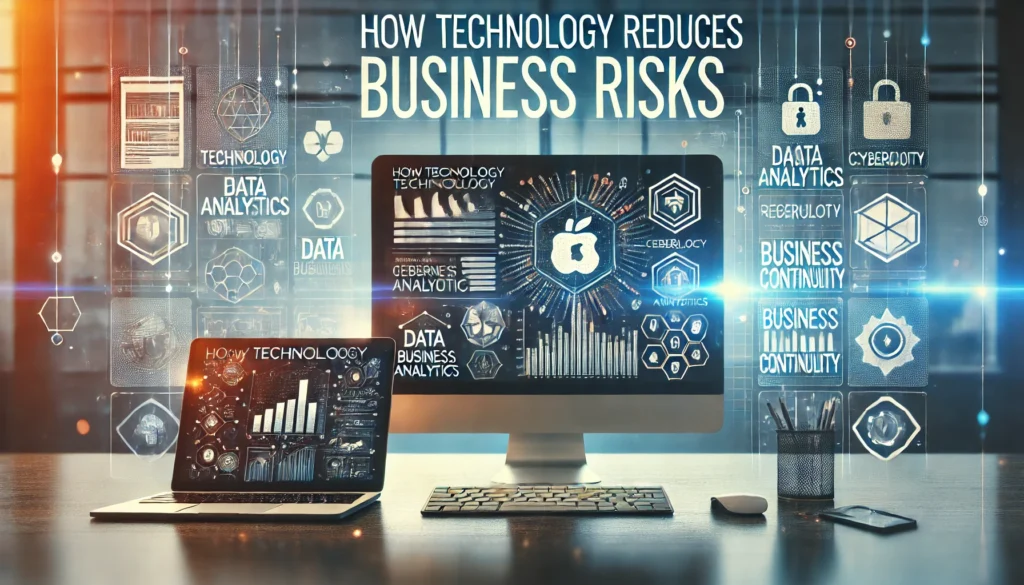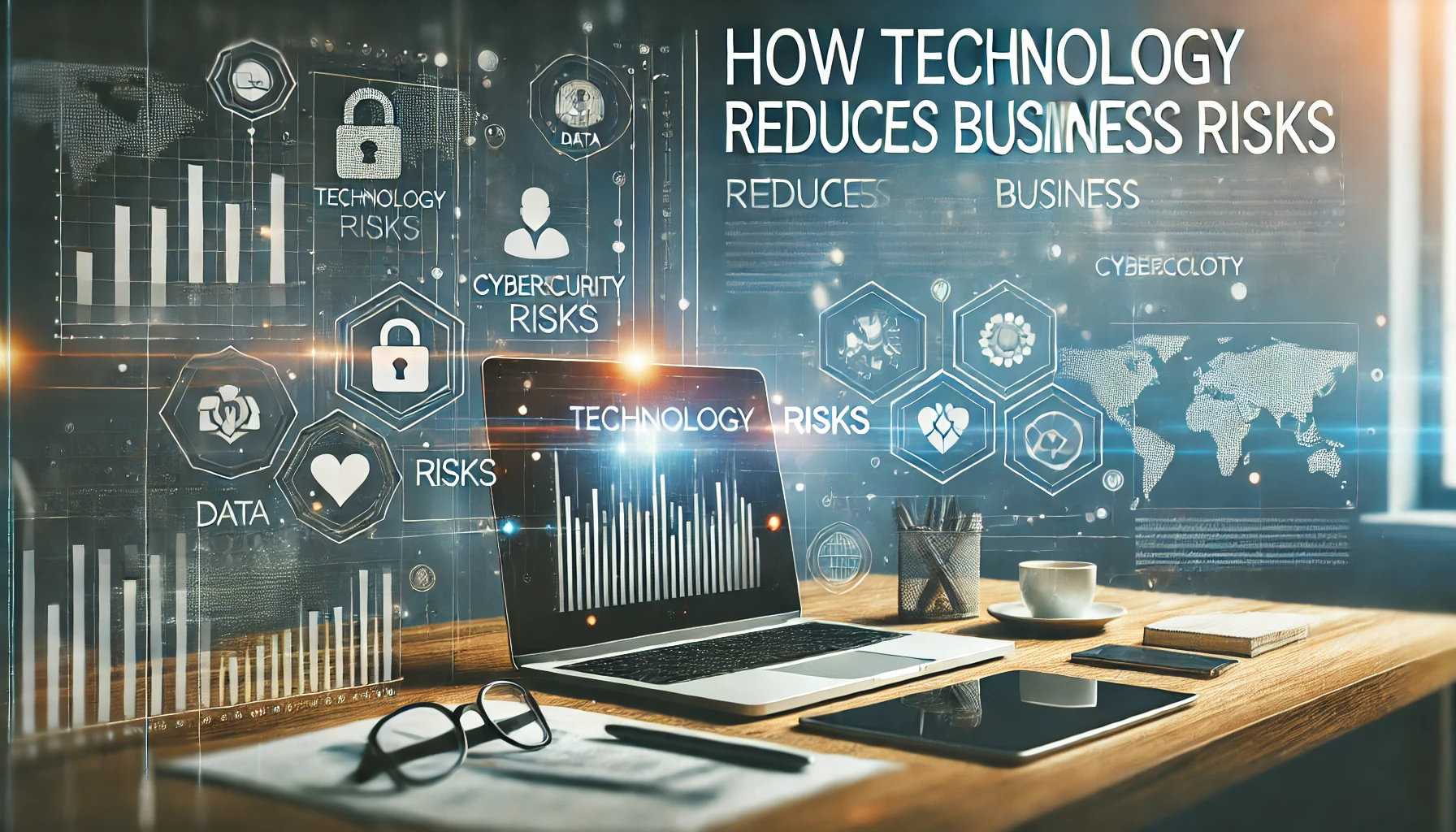Introduction
Business risk is inevitable in today’s fast-paced, technology-driven environment. Companies face numerous risks, from cybersecurity threats and regulatory changes to financial and operational hazards. To combat these, technology has become an essential part of risk management, providing tools and systems to anticipate, mitigate, and respond to various risks. By adopting cutting-edge technology, businesses can stay resilient, safeguard their assets, and maintain continuity even in uncertain conditions.
Understanding Business Risks in Modern Times
Modern business risks fall into various categories, each affecting a different part of an organization. Cyber risks, for example, threaten data security, while financial risks can impact profit margins. Operational risks stem from internal processes, and regulatory risks arise from changing legal landscapes. The interconnectedness of global markets, digital transformation, and remote work have magnified these risks, requiring businesses to adopt sophisticated approaches for mitigation.
Why Technology is Essential in Risk Management
The speed and complexity of business risks today make technology crucial in risk management. Technology enables companies to monitor situations in real time, analyze vast datasets, and quickly respond to threats. This capacity for rapid response and data-driven decision-making helps organizations avoid disruptions and minimize the impact of potential risks, allowing them to operate more effectively.
Cybersecurity Solutions to Mitigate Cyber Risks
One of the most significant risks businesses face today is cybersecurity. As digital transactions and data storage become integral, companies are increasingly vulnerable to cyberattacks. To combat this, cybersecurity technologies such as firewalls, encryption, and anti-malware software have become fundamental. These tools help protect sensitive data from unauthorized access and ensure that information remains secure. Additionally, advanced technologies like multi-factor authentication (MFA) and intrusion detection systems (IDS) can further enhance a company’s cyber defense.
Data Analytics for Identifying and Predicting Risks
Data analytics has transformed risk management by enabling businesses to identify patterns and predict future risks. Tools like predictive analytics, artificial intelligence (AI), and machine learning can analyze vast amounts of data to highlight trends and potential threats. By identifying unusual patterns, companies can proactively address risks before they escalate. For example, retail businesses use analytics to predict seasonal demand fluctuations, while financial firms leverage it to spot fraud patterns.
Cloud Computing to Ensure Business Continuity
Cloud computing has redefined how companies ensure business continuity. By storing data offsite, cloud solutions protect information from physical damage caused by disasters like fires or floods. Additionally, cloud providers offer secure backup and disaster recovery services, which enable companies to restore their operations quickly. Many businesses now rely on Software as a Service (SaaS) and Infrastructure as a Service (IaaS) to maintain secure, accessible data, enhancing their resilience to disruptions.
Artificial Intelligence in Operational Risk Management

AI technologies offer extensive benefits in managing operational risks. They automate repetitive tasks, reducing the chance of human error, which is a significant factor in many operational risks. AI can also predict maintenance needs for equipment, allowing companies to address potential issues before they lead to breakdowns. This predictive approach helps businesses avoid costly disruptions and keeps their operations running smoothly.
Blockchain Technology for Financial Risk Management
In the financial sector, blockchain has emerged as a robust tool for reducing risks. Blockchain’s transparency and security features make it nearly impossible to alter records, providing a reliable system for handling transactions. This technology reduces the risk of fraud, enhances compliance, and enables efficient audits. For example, companies can track supply chain payments, reducing the risk of financial discrepancies and ensuring integrity in financial reporting.
Internet of Things (IoT) for Physical Asset Protection
The Internet of Things (IoT) allows businesses to monitor physical assets in real-time. IoT devices can detect and report anomalies such as temperature changes or unauthorized movements, helping companies protect their assets from theft or damage. These technologies provide automated alerts, enabling quick responses to potential risks and reducing the chances of significant losses.
Automation and Machine Learning for Compliance and Regulatory Risks
Compliance with regulations is essential but can be time-consuming. Automation simplifies compliance management by automatically updating systems to reflect new regulations and generating reports. Machine learning further enhances compliance by analyzing past regulatory data and identifying patterns that could indicate future regulatory changes. This helps companies stay ahead of compliance requirements and avoid legal issues.
Technology in Enhancing Workforce Safety
Workplace safety is a crucial aspect of risk management. Wearable technology can monitor workers’ vital signs and provide real-time updates on their health. Additionally, predictive analysis tools powered by AI can help identify high-risk areas or activities within the workplace, enabling managers to take preventive measures. These technologies are particularly beneficial in industries like manufacturing, construction, and healthcare, where employee safety is paramount.
Technology-Driven Crisis Management and Communication
Effective communication is vital during a crisis. Modern technology, including real-time messaging platforms, mobile alerts, and social media monitoring, allows businesses to stay connected and informed during emergencies. These tools provide real-time updates to employees, enabling better coordination and response. For instance, companies can send mass notifications during natural disasters to guide employees and minimize panic.
Case Studies: Businesses Using Technology to Reduce Risks
Several companies illustrate the effective use of technology in risk management. For instance, financial institutions like JPMorgan Chase use AI to detect fraudulent activities, protecting customer assets. Retail companies like Walmart employ IoT to monitor inventory and prevent losses due to supply chain disruptions. These examples showcase how adopting the right technologies can yield positive results and prevent potential issues.
Challenges and Limitations of Relying on Technology in Risk Management
While technology offers many advantages, it has limitations. Over-reliance on technology can create vulnerabilities, especially to cyber threats targeting digital systems themselves. Additionally, technological failures, such as system outages or software bugs, can disrupt operations. A balanced approach combining technology with human oversight is essential to ensure robust risk management.
Future Trends in Technology and Business Risk Management
Looking ahead, emerging technologies promise further advancements in risk management. Developments in quantum computing, advanced AI, and enhanced IoT are likely to reshape how companies handle risks. For instance, quantum cryptography could provide unparalleled data security, while AI could reach new levels of predictive accuracy, helping companies foresee risks with even greater precision.
Conclusion
Technology has become indispensable in the modern approach to managing and reducing business risks. By leveraging tools like AI, IoT, blockchain, and data analytics, companies can proactively identify, manage, and mitigate risks, allowing them to focus on growth and innovation with greater confidence. As technology continues to evolve, so will its capacity to secure businesses against an increasingly complex risk landscape.
FAQs
1. How does AI help in business risk management?
AI helps businesses predict potential risks by analyzing data patterns, automating processes to reduce human error, and offering real-time insights into operational challenges, all of which enhance proactive risk management.
2. What role does data analytics play in risk reduction?
Data analytics allows businesses to identify trends and forecast risks, enabling them to address potential issues proactively. This predictive approach helps minimize financial losses and maintain smooth operations.
3. Is cloud computing essential for business continuity?
Yes, cloud computing is crucial as it provides secure data storage, backup solutions, and quick disaster recovery capabilities, ensuring business continuity even in the face of physical or digital disruptions.
4. Can IoT be effective in asset management and protection?
Absolutely, IoT devices monitor assets in real-time, alerting businesses to potential risks like unauthorized access or environmental changes that could damage assets, thus enhancing protection.
5. What future technologies will help in risk management?
Technologies such as quantum computing, advanced AI, and IoT advancements are expected to enhance risk management by improving data security, predictive analytics, and real-time monitoring capabilities.








Leave a Reply